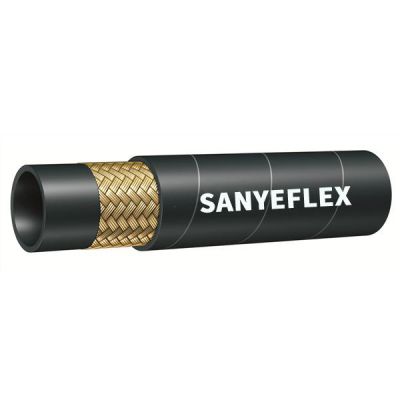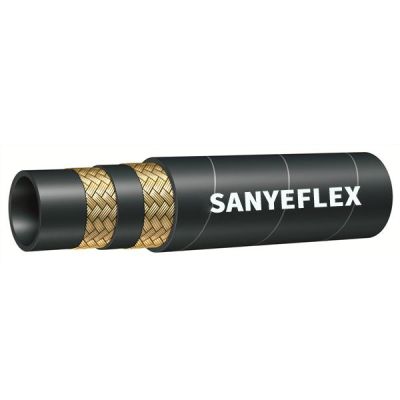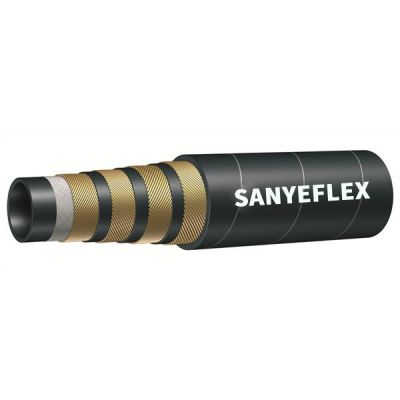Sep. 09, 2024
Hydraulic hoses play a critical role in the smooth functioning of hydraulic systems, which are widely used in industries like construction, agriculture, and manufacturing. Selecting the right hydraulic hose is essential for optimizing performance, ensuring safety, and preventing costly downtime.
Choosing the right hydraulic hose for your system is vital because it directly affects the efficiency, durability, and safety of your equipment. A poorly selected hose can lead to:
Premature wear and tear
Leaks or bursts under pressure
Increased maintenance costs
Equipment failure and downtime
The right hydraulic hose, on the other hand, ensures optimal performance, minimizes breakdowns, and extends the service life of your hydraulic system.
1. Hose Type
There are several types of hydraulic hoses, each designed for different pressures and applications. The most common types include:
Low-pressure hoses: Ideal for low-pressure applications like return lines.
Medium-pressure hoses: Used in systems with moderate pressure, such as construction equipment.
High-pressure hoses: These are designed for heavy-duty applications, such as those in mining or heavy machinery.
Always ensure the hose type you select matches the pressure requirements of your application to avoid failure.
2. Material
Hydraulic hoses are typically made from rubber, thermoplastics, or metal. The material you choose should be based on the operating environment and the type of fluid being transferred.
Rubber hoses: Flexible and durable, ideal for most industrial applications.
Thermoplastic hoses: Resistant to abrasion and chemicals, great for outdoor or harsh environments.
Metal hoses: Best for high-temperature environments or applications involving corrosive fluids.
3. Temperature Range
Hydraulic systems can operate in a wide range of temperatures. Be sure to choose a hose with a temperature rating that fits the conditions of your application. Some hoses are specifically designed for extreme cold or heat, so understanding the operating environment is crucial.
4. Hose Size and Length
Hydraulic hoses come in various diameters and lengths. The internal diameter (ID) of the hose affects the flow rate, while the length impacts pressure drop. It’s essential to select the correct hose size to ensure efficient fluid transfer and minimize system losses.
5. Pressure Rating
The pressure rating of a hose must match or exceed the maximum operating pressure of the hydraulic system. Look for hoses that are rated for higher pressures to account for spikes or surges in the system. A hose with an inadequate pressure rating can fail under stress, causing dangerous leaks or bursts.
6. Bend Radius
Hoses that need to be bent around corners or curves should have a bend radius rating. Selecting a hose with a bend radius that fits your application is crucial to avoid kinks or breaks, which can disrupt fluid flow and reduce system efficiency.
7. Compatibility with Fluids
Hydraulic hoses must be compatible with the fluids they carry. Certain hoses are specifically designed to resist specific types of hydraulic fluids, whether it’s petroleum-based, synthetic, or water-based fluids. Choosing the wrong hose can result in degradation, leaks, or system contamination.
8. Fittings and Connectors
Selecting the right fittings and connectors is as important as choosing the hose itself. Ensure that the hose’s fittings are compatible with your hydraulic system to avoid leaks and ensure smooth operation. Choose corrosion-resistant fittings for longer-lasting performance in harsh environments.
9. Durability and Longevity
Durability is a key consideration, especially if the hose will be exposed to tough conditions like abrasion, vibration, or extreme temperatures. Selecting a hose with protective covers or reinforcements, such as steel wire braiding or textile layers, can greatly extend its lifespan.
Hydraulic hoses are used in a variety of industries and applications. Some of the most common include:
Construction machinery: Excavators, loaders, and cranes require durable, high-pressure hoses.
Agriculture equipment: Tractors and harvesters use medium-pressure hoses for fluid power systems.
Manufacturing equipment: High-pressure hoses are crucial for robotic arms and assembly line machinery.
Mining: Heavy-duty hoses are essential in the mining industry, where equipment must operate under extreme conditions.
Hydraulic hose selection involves considering various factors such as pressure rating, material, temperature range, and compatibility with fluids. Making the right choice will enhance your system’s performance, improve safety, and reduce downtime. Always consult with a hydraulic hose expert or supplier if you're unsure about the best option for your application.
By taking the time to carefully select the right hydraulic hose, you can significantly improve the efficiency and reliability of your hydraulic system, ensuring long-term success in your operations.
Previous: How to Choose Super Flexible Series Pilot Hoses
Next: Hydraulic Hoses for Heavy Machinery: What You Need to Know
Our Customer
Tel.: +86 400 0318 111
Email: admin@sanyeflex.com
Add.: #218 Zhongke Street, High-tech Zone, Hengshui City, Hebei Province, China



